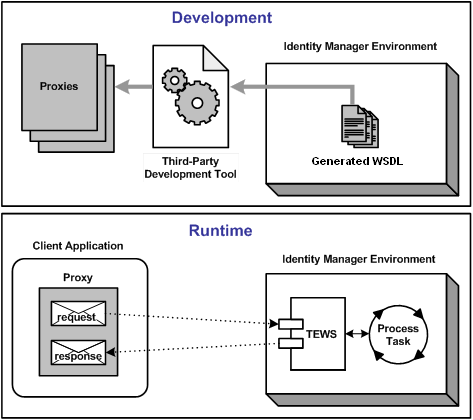

The following steps are an overview of the client application development process for submitting remote web service requests to CA IdentityMinder.
Note: This overview assumes that your integrated development environment includes a third-party tool like Axis that generates proxies. While this approach automates some of the development, it is not required.
http://host:port/iam/im/TEWS6/environmentalias?wsdl
For example:
http://tewstest.ca.com:7001/iam/im/TEWS6/neteauto?wsdl
Note: The URL is case-sensitive, and environmentalias is the protected alias of the CA IdentityMinder environment.
Proxies reflect the operations that your client can submit to CA IdentityMinder. Java proxies generated by third-party tools such as Apache Axis provide precise, self-documenting entry points and parameters.
Develop whatever programming logic is required to process the SOAP requests and responses in compliance with your business requirements.
The following diagram illustrates the development and run-time processes:

|
Copyright © 2013 CA.
All rights reserved.
|
|